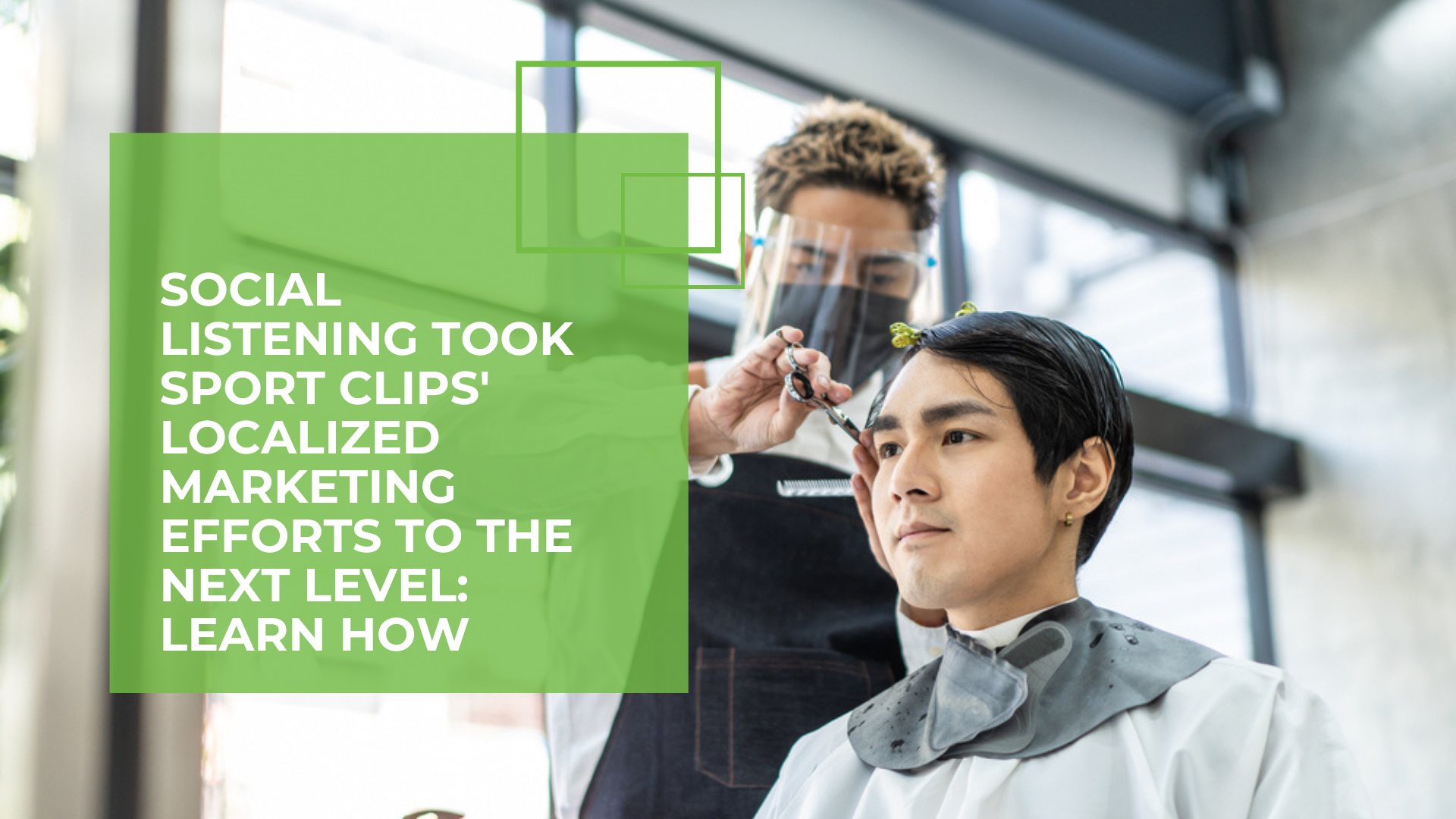4 Unique Ways Social Media Listening Can Increase Customer Advocacy
Top 5 Challenges Marketers Face When Posting Locally

Top 5 Challenges Marketers Face When Posting Locally
When it comes to social media, it’s all about local. Localized content receives 12x the engagement rate of content that is not considered localized. Similarly, 72 percent of user engagement and 66 percent of brand-related impressions happen on local Facebook pages, not on corporate pages.
As a multi-location business, posting at the local level is a must, but it’s not always an easy task to scale across 100s or 1000s of locations. Curious how to master this? Within this blog, we’ll go through the top challenges marketers face when posting locally and real tactics your multi-location business can leverage to overcome these challenges.
1. Collaboration Between Corporate and Local Businesses
One of the most common challenges multi-location businesses face when posting locally is how to find a balance on who takes charge, corporate or the local business itself. There are typically three different models most multi-location businesses choose from when it comes to posting social content or running localized ads:
- The centralized model is where corporate primarily runs all marketing efforts.
- The decentralized model is where individual business locations primarily run all marketing efforts.
- Finally, the hybrid model is a combination of the two above. Both corporate and individual business locations collaborate to run marketing efforts.
While, as you would expect, the hybrid model is often the best option, it can be tough to achieve. It’s also important to incorporate local, localized, and corporate waterfall content into your local social strategy.
- Local content can be defined as anything that is only applicable to an individual business location including photos of local employees, videos of local events, and local store photos. Local content contains assets that must be captured by local teams.
- Corporate waterfall content contains anything that is posted directly from corporate and is not edited for each individual location. It represents the corporate brand and can serve as great content to maintain an active presence. Because it lacks localization, corporate waterfall content typically doesn’t receive high-valued engagement.
- Corporate can also deliver templates and easily editable assets to local teams, which they can localize for their local audiences. You’re still posting “local” content, but it’s at scale. When you think of localized content, think customer testimonial image templates, company-wide discounts or promos that can be edited, or holiday posts.
With 100s or even 1,000s of business locations, multi-location marketers find it challenging to keep local businesses accountable for posting on local social, while also incorporating corporate content into the mix. It can also be challenging to ensure that local stores know what type of content to post, which brings us to our next challenge.
2. Maintaining Consistent Messaging and Brand Guidelines
Consumers should be able to recognize your brand across all of your locations. Think of a Nekter Juice Bar – while each restaurant may have a slightly modified vibe, you can tell every storefront belongs within that brand. Your local content or ad campaigns on your social pages should be the same! If they see a social media post from one of your stores in New York, they should be able to associate it with another post from your business in North Carolina. While your multi-location business will benefit from individual business locations that post locally, maintaining branded messaging and visuals across several geographic areas is necessary to ensure brand consistency.
Often you’ll find that some of your locations have experienced marketers on-staff who understand the importance of messaging and brand guidelines, while others will lack that experience or time to focus on those efforts. If this is the case, corporate needs to distribute brand guidelines and expectations to ensure that all businesses are on the same page.. For instance, your brand’s logo should remain consistent across all local social channels, and your brand’s mission statement and language used shouldn’t differ too much from location to location. For more information on the importance of consistent branding and messaging, check out our blog on the topic.
3. Knowing When and How Often to Post
While maintaining brand guidelines can be a struggle itself, multi-location marketers also find it challenging to keep posting consistency across their local businesses’ social channels. Is there a standard for how frequently my business should be posting on local social? How much content is too much? How often should I create ad campaigns?
Our 2021 Localized Marketing Benchmark Report provides answers. Data from our latest report found that, on average, multi-location marketers posted nine times a month on Facebook, or about two posts a week, and one time per month on Google My Business. If your multi-location business wants to stand out as an industry leader, individual business locations should be posting at least this often, if not more. So – you’re probably thinking, there’s no way I can get all of my local owners or teams to post this frequently, which is where localized content comes in!
Corporate can supplement a content map and strategy with templates and suggested posts to help meet these posting frequency minimums. If you help prove the value of local social to your local teams, hopefully, it will be easier to get them on board. With the stats within the report, and the fact that the top 10 localized marketing leaders grew their revenue 3x faster compared to other brands, it should be an easy sell.
The report also found that the top 10 leaders in localized marketing had 84 percent of their business locations posting on Facebook, compared to the 49 percent average of all of the multi-location businesses studied in the report. While your multi-location business should strive to have all of its business locations posting at the local level, meeting or exceeding these averages is a must. Scheduling content is a great way to ensure your local businesses are posting on social. Providing local teams with technology a scheduling functionality allows them to pre-schedule content days or weeks in advance, instead of having to remember to post daily.
4. Organization of Content
Now that you understand how much and how often your businesses should be posting on social media and the importance of scheduling content, we’ll dive into the next challenge – where do you keep all these shared assets? Often, multi-location companies find it challenging to organize their content across limitless business locations. It can be difficult for corporate to empower local businesses to post on local social media while still maintaining some level of oversight.
Local stores can also find it intimidating to organize and pre-schedule content for their business locations. And to do this for months at a time? Forget about it! While content calendars are one-way local businesses can manage their content, a tool that helps them create, edit, plan, and schedule content is even more beneficial.
5. Training Local Teams on Social Media Best Practices
Finally, one of the biggest challenges multi-location managers face when posting locally is how to increase the local adoption of posting locally. Marketers are often stretched thin with budget, time, and balancing priorities, and finding a way to get your local teams to adopt a local social media strategy effectively can prove challenging. In order to increase local adoption, corporate must provide local teams with brand-approved content or ads that can be easily shared or adjusted to suit the specific business needs. By doing so, you’ll be making their lives easier, help them grow their business, and let them focus on what they do best, actually running their business.
Additionally, and arguably even more importantly, providing local teams with an easy-to-use tool to create and execute a local social strategy straightforward is another excellent option. Now that you understand the top 5 challenges businesses face when posting content and ads locally, how can your business overcome them? Consider the following:
- Establish your approach to localized marketing
- Create a community content calendar that supports a combination of local, localized, and corporate waterfall content
- Develop branding and messaging guidelines that should be leveraged across business locations
- Identify best practices for posting at the local level and incorporate them into your local social strategies
- Find a tool that can best support your business’s local social needs
For more information on how SOCi’s Social Solution can help your multi-location business overcome the challenges it faces when it comes to local social posting and ad creation, request a demo today! It’s time to crush the competition through local social efforts, and SOCi is here to help.





